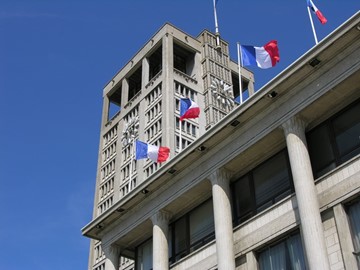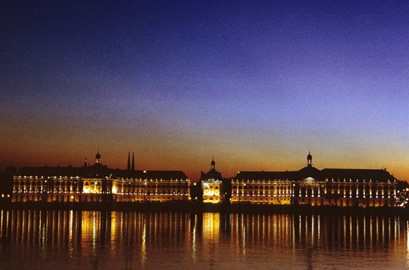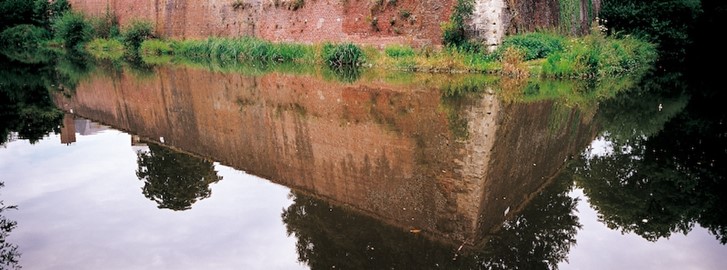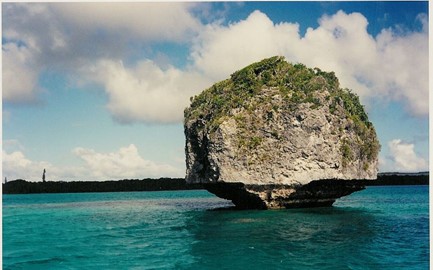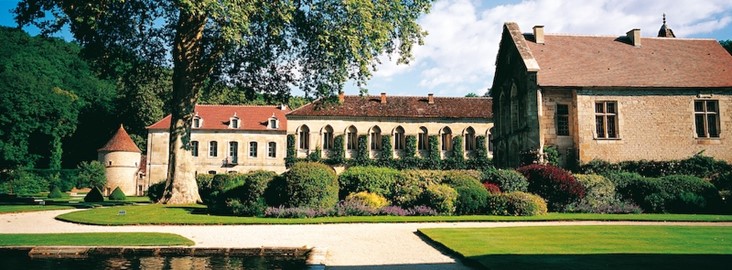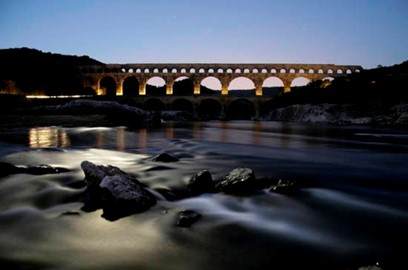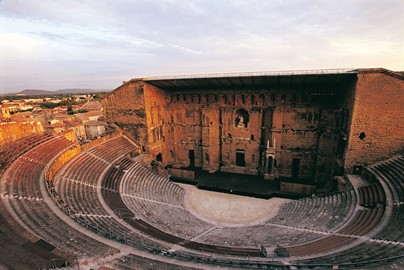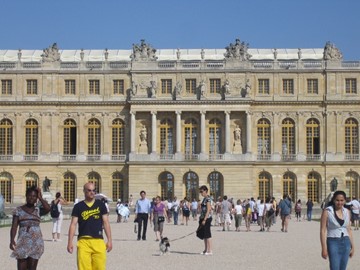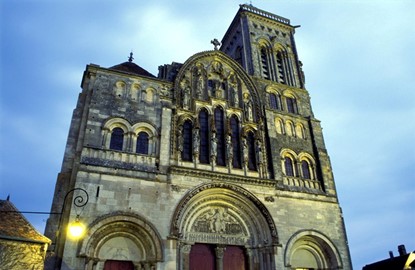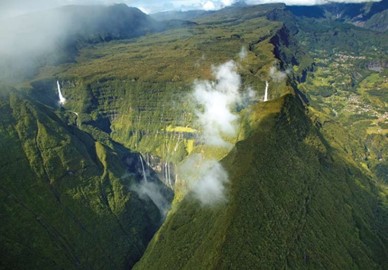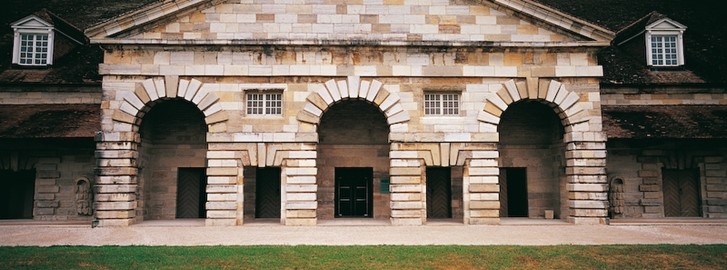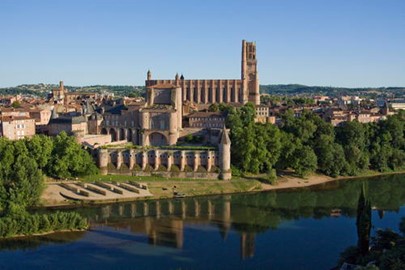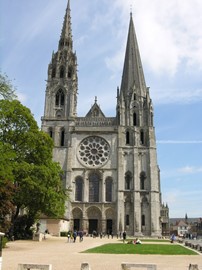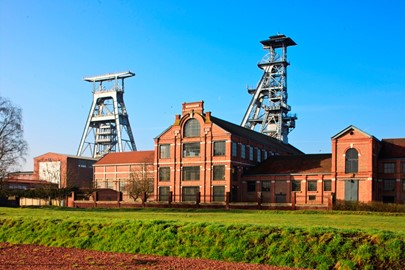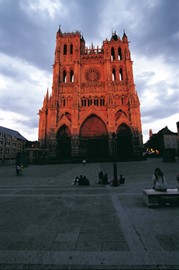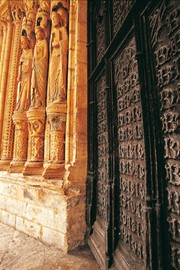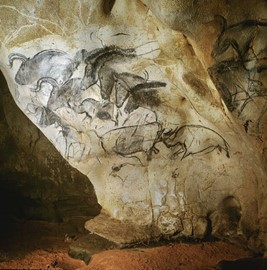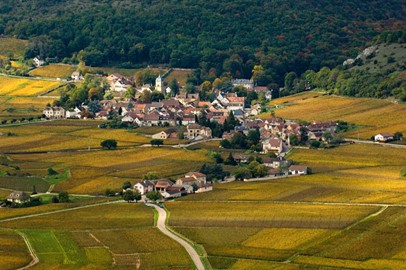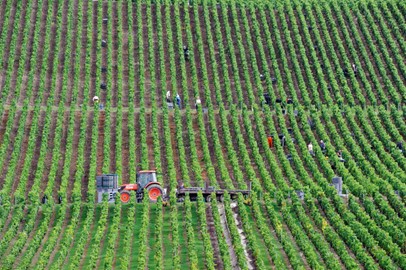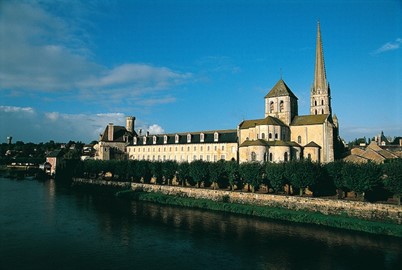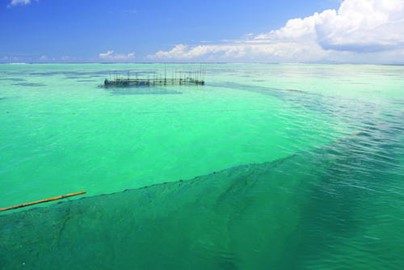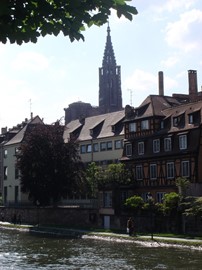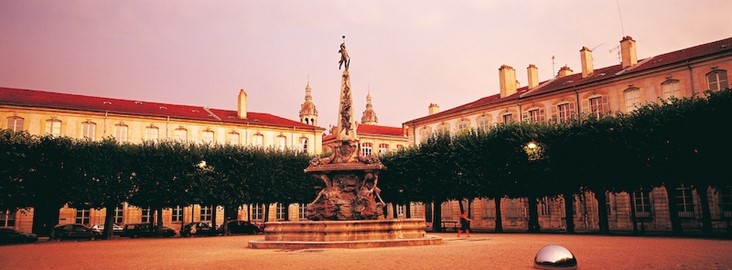region :: europe and north america
Le Havre
Le Havre, a UNESCO World Heritage site in France, is a remarkable example of post-World War II urban planning and architecture. Designed by Auguste Perret, the city showcases a modernist reconstruction with innovative use of reinforced concrete, blending functionality with aesthetic harmony. Its unique layout, featuring wide boulevards and a grid pattern, reflects a vision of renewal after wartime destruction. Key landmarks, like the St. Joseph’s Church with its striking tower, highlight Le Havre’s cultural... Read More
Bordeaux
Bordeaux, Port of the Moon, is a UNESCO World Heritage site in France, renowned for its exceptional urban ensemble reflecting over 2,000 years of history. Named for its crescent-shaped riverfront along the Garonne, it features elegant 18th-century architecture, grand boulevards, and iconic landmarks like the Place de la Bourse and its reflecting pool. The site’s historical significance as a thriving trade port and its well-preserved neoclassical design highlight its cultural and architectural value, earning... Read More
Fortifications of Vauban
The Fortifications of Vauban, a UNESCO World Heritage site in France, consist of a series of military structures designed by the renowned 17th-century engineer Sébastien Le Prestre de Vauban. These fortifications, built during the reign of Louis XIV, showcase innovative defensive architecture, including star-shaped bastions and strategic layouts adapted to the landscape. Recognized for their historical and architectural significance, they represent a pinnacle of military engineering from the era and continu... Read More
Lagoons of New Caledonia
The Lagoons of New Caledonia, a UNESCO World Heritage site in the French Pacific Ocean archipelago of New Caledonia, are a pristine marine expanse of coral reefs, atolls, and turquoise waters. Hosting vibrant ecosystems with rare fish, turtles, and dugongs, they form one of the world’s most diverse reef systems. This natural wonder highlights the beauty and fragility of oceanic biodiversity.
Cistercian Abbey of Fontenay
The Cistercian Abbey of Fontenay, a UNESCO World Heritage site in France, is a remarkably preserved 12th-century monastery exemplifying Cistercian simplicity and functionality. Founded in 1118, its austere stone architecture includes a church, cloister, and dormitories, reflecting the order’s monastic ideals. Nestled in a tranquil valley, it remains one of the oldest surviving Cistercian complexes. The abbey’s forge and gardens highlight its self-sufficient past. This site offers a serene glimpse into medie... Read More
Pont du Gard
Pont du Gard, a UNESCO World Heritage site in France, is an ancient Roman aqueduct bridge built in the 1st century AD to carry water across a river valley. Standing three tiers high, its massive stone arches showcase remarkable engineering and durability. Constructed without mortar, it remains one of the best-preserved structures of its kind. The bridge once supplied a thriving Roman colony with fresh water, highlighting advanced infrastructure. Its elegant design blends seamlessly with the natural landscap... Read More
Orange
The Roman Theatre of Orange, a UNESCO World Heritage site in France, is one of the best-preserved ancient theaters from the 1st century CE. Built into a hillside, its grand stage wall and tiered seating once hosted performances for thousands. The structure showcases Roman engineering and acoustic design at its finest. Its intricate carvings and robust stonework reflect the empire’s cultural influence. Today, it stands as a testament to antiquity’s architectural legacy. This site offers a striking glimpse in... Read More
Versailles
The Palace of Versailles, a UNESCO World Heritage site in France, is a grand palace and gardens epitomizing 17th-century royal extravagance. Built under Louis XIV, its opulent halls, like the Hall of Mirrors, showcase Baroque architecture and lavish decor. The sprawling gardens feature fountains, sculptures, and manicured lawns, reflecting meticulous design. Once a political hub, it symbolizes absolute monarchy’s power and prestige. This iconic site blends history, art, and nature in stunning harmony.
Vézelay
Vézelay, a UNESCO World Heritage site in France, is a medieval hilltop village centered around the Basilica of Saint Mary Magdalene. This Romanesque masterpiece, built in the 12th century, features intricate carvings and a soaring nave, drawing pilgrims for centuries. The site served as a key starting point for Crusades and Santiago de Compostela pilgrimages. Its well-preserved streets and panoramic views enhance its historic charm. Vézelay reflects a rich blend of spiritual significance and architectural b... Read More
Reunion Island
Reunion Island, a UNESCO World Heritage site in a French department of the Indian Ocean, is a volcanic island renowned for its dramatic landscapes and rich biodiversity. Towering peaks, deep cirques, and lush forests create a stunning natural tapestry. It hosts unique species like the Reunion cuckoo-shrike, thriving in its varied ecosystems. The island’s rugged terrain reflects millions of years of geological activity. This pristine site blends natural wonder with ecological significance. It stands as a tes... Read More
Royal Saltworks of Arc et Senans
The Royal Saltworks of Arc-et-Senans, a UNESCO World Heritage site in France, is an 18th-century industrial complex designed for salt production. Built in a visionary semicircular layout, it reflects Enlightenment-era ideals of order and innovation. The site includes grand buildings like the Director’s House and workers’ quarters, showcasing architectural ambition. Once a vital economic hub, it used nearby brine springs to create salt. Today, it stands as a testament to France’s industrial heritage and utop... Read More
Albi
The Episcopal City of Albi, a UNESCO World Heritage site in France, is a medieval ensemble dominated by the red-brick Sainte-Cécile Cathedral, a Gothic masterpiece. Built from the 13th century, its fortress-like design reflects the Church’s power after the Cathar heresy. The adjacent Berbie Palace, now a museum, houses an extensive Toulouse-Lautrec collection. Narrow streets and historic homes add to its charm. This site blends architecture, history, and art seamlessly. It offers a striking glimpse into Fra... Read More
Chartres Cathedral
Chartres Cathedral, a UNESCO World Heritage site in France, is a masterpiece of Gothic architecture from the 12th and 13th centuries. Renowned for its soaring towers and intricate stone carvings, it stands as a testament to medieval craftsmanship. The cathedral’s vibrant stained-glass windows, depicting biblical scenes, are among the world’s finest. Its well-preserved structure reflects the era’s religious devotion and artistic innovation. This iconic site draws visitors to explore its historical and spirit... Read More
Nord Pas de Calais Mining Basin
The Nord-Pas de Calais Mining Basin, a UNESCO World Heritage site in France, is a historic industrial landscape shaped by over three centuries of coal mining. It features pitheads, slag heaps, and workers’ villages, reflecting the region’s economic and social history. The site preserves the legacy of the Industrial Revolution and its impact on communities. Its distinctive terrain blends human ingenuity with stark natural forms. This area offers a poignant look at France’s industrial past and its evolution.
Causses and the Cévennes
The Causses and the Cévennes, a UNESCO World Heritage site in France, is a vast pastoral landscape of limestone plateaus and rugged mountains. Shaped by centuries of agro-pastoral traditions, it features ancient stone villages, terraces, and grazing lands. This region reflects a harmonious balance between humans and nature, rooted in medieval practices. Its dramatic scenery includes deep gorges and rolling hills, rich with biodiversity. The site preserves a unique cultural heritage tied to sustainable land ... Read More
Amiens Cathedral
Amiens Cathedral, a UNESCO World Heritage site in France, is a towering Gothic masterpiece built in the 13th century. Known for its soaring nave and intricate facade adorned with countless statues, it exemplifies medieval craftsmanship. The cathedral’s vast interior houses stunning stained glass and detailed reliefs. Its harmonious proportions and grandeur make it a pinnacle of Gothic architecture. This historic site reflects France’s religious and artistic legacy.
Bourges Cathedral
Bourges Cathedral, a UNESCO World Heritage site in France, is a magnificent Gothic masterpiece begun in the 12th century. Renowned for its soaring arches and intricate stained glass, it exemplifies medieval architectural brilliance. The cathedral’s harmonious design lacks a transept, creating a unified interior space. Its detailed sculptures and vibrant windows depict biblical scenes with stunning clarity. This historic site stands as a testament to France’s religious and artistic heritage.
Decorated Cave of Pont d’Arc
The Decorated Cave of Pont d’Arc, a UNESCO World Heritage site in France, is a prehistoric marvel containing some of humanity’s oldest known art, dating back over 30,000 years. Discovered in 1994, its walls are adorned with vivid paintings of animals like horses, rhinos, and lions, crafted with remarkable skill. The cave’s natural archway and chambers enhance its mystique, preserving a fragile snapshot of Paleolithic life. Sealed for millennia, it offers unparalleled insight into early human creativity and ... Read More
Burgundy
The Climats, terroirs of Burgundy, a UNESCO World Heritage site in France, is a historic wine-growing region shaped by centuries of viticulture. Its patchwork of small, defined vineyard plots, known as climats, reflects unique soil and climate conditions. Monks and dukes developed this landscape, building villages and stone walls around the vines. The site includes ancient cellars and chateaux tied to winemaking traditions. It showcases a living legacy of human ingenuity and nature’s influence. This cultura... Read More
Champagne
The Champagne Hillsides, a UNESCO World Heritage site in France, is a historic wine region renowned for its sparkling wine production since the 17th century. Its rolling vineyards, ancient cellars, and charming villages reflect centuries of viticultural tradition. The unique chalky soil and microclimate contribute to the distinctive quality of Champagne. This landscape showcases the ingenuity of winemakers who perfected the méthode champenoise. It blends natural beauty with cultural significance, tied to gl... Read More
Saint Savin sur Gartempe
Saint-Savin sur Gartempe, a UNESCO World Heritage site in France, is a Romanesque abbey renowned for its 11th-century frescoes. Often called the 'Sistine Chapel of France,' its vivid murals depict biblical scenes across the vaulted ceiling. The abbey’s simple stone architecture contrasts with the intricate artistry inside. Built by monks, it reflects medieval religious devotion and skill. This well-preserved site offers a striking glimpse into early European sacred art. Its serene riverside setting enhances... Read More
Taputapuatea
Taputapuātea, a UNESCO World Heritage site in Ra’iātea Island, is a sacred cultural landscape central to Polynesian heritage. It features a complex of ancient marae—open-air temples—built between the 14th and 18th centuries, reflecting 1,000 years of mā’ohi civilization. These stone structures served as political, ceremonial, and spiritual hubs, connecting the living with ancestors and gods. Nestled amidst forested valleys, a lagoon, and coral reefs, it showcases traditional Polynesian architecture and navi... Read More
Strasbourg
Strasbourg, a UNESCO World Heritage site in France, is a historic city renowned for its picturesque medieval core. Its iconic Gothic cathedral, with its intricate facade, towers over half-timbered houses along charming canals. The site reflects a unique blend of French and German influences due to its border location. Known for its role in European history, it preserves a rich cultural tapestry. This well-preserved urban gem offers a captivating glimpse into centuries of architectural and political heritage... Read More
Nancy
Place Stanislas, Place de la Carrière and Place d'Alliance in Nancy, a UNESCO World Heritage site in France, is a historic city celebrated for its 18th-century architectural ensemble. Its elegant squares, including Place Stanislas, feature ornate fountains, gilded gates, and neoclassical buildings. Designed as a royal showcase, it reflects Enlightenment-era urban planning. The site blends French artistry with regal charm. This well-preserved gem offers a glimpse into a refined period of European history.
Loire Valley
The Loire Valley, a UNESCO World Heritage site in France, is a picturesque region renowned for its Renaissance châteaux and lush landscapes. Its grand castles, like Chambord and Chenonceau, reflect the opulence of French royalty and architectural innovation. The valley’s vineyards and charming villages add to its scenic allure. This site embodies a harmonious blend of nature and human creativity. It offers a glimpse into France’s aristocratic past and cultural legacy. The Loire Valley stands as a testament ... Read More
